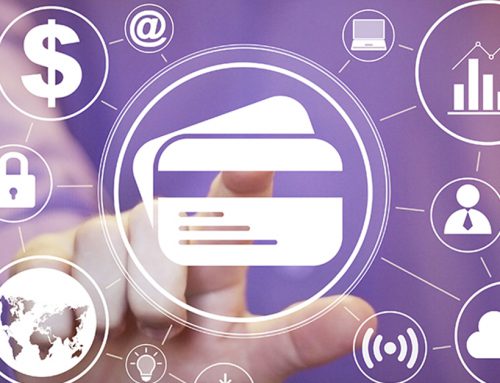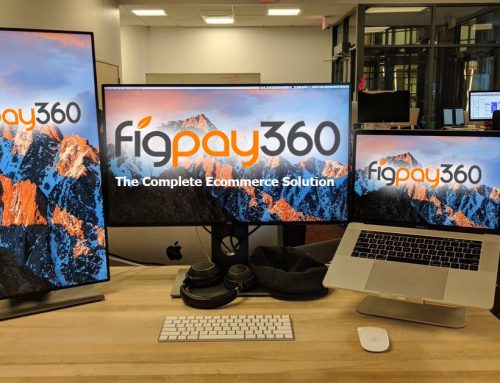As Covid-19 continues to severely impact the retail sector, the financial cost of the virus is predicted to be in the region of $15.8 billion in this quarter alone. Brick-and-mortar retailers without an e-commerce offering are being hit hardest currently by store closures. With the unpredictability and uncertainty of the current climate, retail businesses simply can’t afford not to be online.
Moving the Bricks to Clicks
Consumer shopping habits are changing amidst the last 6 weeks of the lockdown measures. More and more shoppers said they are using online stores more frequently, even for the daily necessities. While self-isolation is limiting consumers’ ability to get to the high street, ecommerce can offer a larger opportunity than ever before for companies to service their customers’ needs and in the process, protect their operations and employees through the crisis.
Simply said, your company needs to have an effective selling site that you can connect your walk-in customers with.
In order to maintain the revenue that is needed not only to keep you afloat, but also thriving, you need to reflect and become the answer to the dynamic changes in consumer behavior. Bridging the gap between a brick-and-mortar location and an internet offering site has become key for businesses across the board to survive.
What is particularly interesting is that this situation brings to the forefront the number of brick-and-mortar retailers that have yet to establish an effective online presence and are now keen to do so for the first time due to the opportunities presented by ecommerce.
Ideally, your executives should have been on top of this right from the get-go and have a team working on your ecommerce presence right now. Hopefully, if that isn’t the case, what we described above doesn’t describe your company’s online presence (nil to none, vs. developed and functioning) but if you and your C-level team have been caught off-guard at any point, it will be best if you continue reading.
Setting up the business for online success
The challenge for any business is establishing the correct methods about setting up and running an ecommerce website to its fullest capacity. Now, with the focus on so many other challenges and margins are tight, it may seem that all this is insurmountable.
The good news is, it isn’t, nor is it overly costly, time-intensive, or a complicated process. Here are the main points you need to keep in mind:
- Choosing the right ecommerce platform: In order to get set up correctly and swiftly as possible you need to choose the right type of website to build your online store upon. You need to choose one that will accommodate your growth and capacities to add the customizations you need to cater to your customers. That is why we recommend setting your site on a robust WordPress-based theme with a Woocommerce shopping cart apparatus. These will align best with your customers and your desired brand image. Do your homework on the right theme for your company, by doing so you won’t waste time in any respect building your web store.
- Selecting the right domain name: a domain name is the part of the store’s URL that best identifies your company. It should match what the branding your brick and mortar store has already established, yet be catchy enough to be readily remembered. Avoid long domain names. Sometimes, the domain name can represent what you sell, or who you are in the industry to the customer base. If you already have your name and got your website hosted properly, then you can move on to the next point.
- Providing the visuals needed: Because the website experience is nearly all visual, you need to invest in the right graphics for your site. Photos, product pictures, videos, etc. all play in this section. You need a correct representation of what you sell and who you are and if you skimp on the graphics, it will cost you in the long run.
- Gaining the logistical advantage: Businesses who are already established physically often already have their supplier relationships. But the product isn’t walking out the door online, it needs to be packaged and shipped. You can do it yourself or within your company’s four walls, or you can get the specialized shipping companies out there to store and send for you. Find out what would work best for your customers, and what can be the most cost-effective for your company.
- Displaying and selling the products: Quite honestly, this is where you may spend the bulk of your time setting up your ecommerce website. For those who carry one or two items, not so much, but for those who have ten to twenty with variations, of sizes colors, brands, etc. this will be the time cruncher. Most of the time you can uniform the process by getting everything ready from the start, with SKU’s, descriptions, item counts and the rest to plug them into the shopping cart efficiently. (Also remember the product pictures are a large portion of this too).
- Setting up your site’s profitability: There is a second tier, just as crucial to success as your products and graphics. And those are what you use to enhance the User Experience on your site. This includes the reliable Payment Gateway (what is used to process the card payments on the site) Web Security measures ( site encryption and malware scans) Reputation Management (Google and Facebook Reviews connected) Onsite Product Recommendations (testimonials of what you sell) and Cart Abandonment strategies that keep the sale alive and ready for transactions.
We here at FigPay have created for you, the best solution possible for those looking to bring their ecommerce efforts to the next level. From the very beginning, all the way to the goal of increasing your monthly volume. We’ve created for you the FigPay360 Ecommerce Suite that has been statistically proven to help your site bring more viewers, assist in capturing more sales, and increase the loyalty factor that can keep your business thriving.
With the right plan and approach in place, you can transcend this crisis and bring your offline functionality to an online platform that pulls, sells, and grows.







